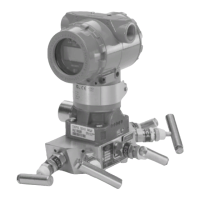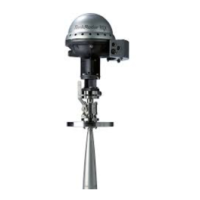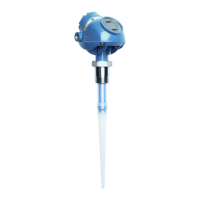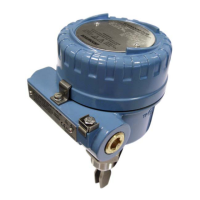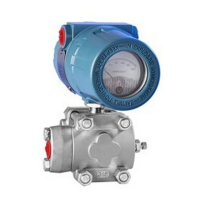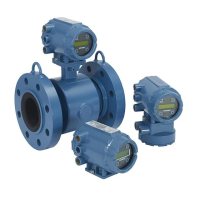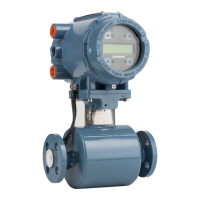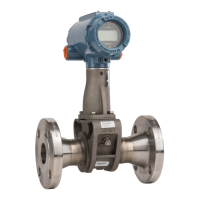69
Reference Manual
00809-0100-4809, Rev DA
Section 3: Commissioning
September 2015
Commissioning
Check for system leaks
Check the system for leaks after installation is complete. A leak in a differential pressure
instrument system can produce a difference in pressure that is larger than the signal itself.
Before the system is filled and/or commissioned, it is a simple matter to use compressed air or
another inert, compressed gas to check for leaks. The gas pressure must be below the maximum
allowed, but at least equal to the normal operating pressure in order to reveal potential leaks. A
typical pressure used is 100 psig (690 kPa).
Before pressurizing the system, check for leaks by doing the following:
1. Open equalizer valve(s) MEH, MEL, or ME to prevent over-pressuring the DP sensor on
one side. Refer to Figure 3-4, Figure 3-5, and Figure 3-6 for valve designations.
2. Close valves PH, PL, MV, DVH, and DVL.
3. Open valves MH and ML.
4. Install all appropriate tapped plugs.
5. Apply pressure at a convenient point on either the high or low side of the system. The
DVH, DVL, or MV ports could be used.
6. Use a suitable leak detection solution and apply to all of the impulse piping, valves,
manifold, and connections. A leak is indicated by a continuous stream of bubbles.
7. Repair any leaks in the system by first removing pressure from the system. Repeat Steps
1 - 6 as necessary until no leaks are detected.
8. Remove test pressure and re-install all appropriate plugs.
“Calibrate out” line pressure effects
Note
Do not begin this procedure until the system leak check has been completed on the impulse
piping and all leaks have been fixed.
For applications 100 psi and higher, the DP sensor should be zeroed for line pressure effects.
The “zero” calibration procedure is affected by static pressure and ambient temperature, but
these effects can be minimized by zeroing the DP sensor at normal operating conditions.
The effect of static pressure is calibrated out by exposing the transmitter to the line pressure
and performing a “zero” or wet calibration, as described below.
Although the line pressure effects are relatively small, they significantly affect the accuracy of
the Annubar sensor when used with low flows.
Periodic “zero” calibration and/or commissioning is recommended to maintain the accuracy of
Annubar sensor. The frequency of this type of maintenance should be established for each
individual application.
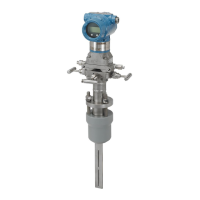
